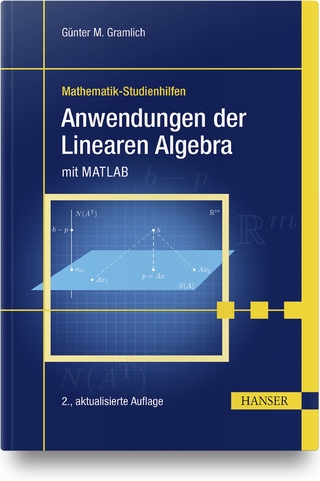
Topics in Symbolic Dynamics and Applications
Seiten
2000
Cambridge University Press (Verlag)
978-0-521-79660-6 (ISBN)
Cambridge University Press (Verlag)
978-0-521-79660-6 (ISBN)
This book, first published in 2000, is devoted to developments in symbolic dynamics. The opening chapters introduce systems of both 'low' and 'high' complexity. The later chapters go on to deal with more specialised topics including ergodic theory, number theory, and one-dimensional dynamics.
This book, first published in 2000, is devoted to developments in symbolic dynamics and comprises eight chapters. The first two are concerned with the study of symbolic sequences of 'low complexity', the following two introduce 'high complexity' systems. Chapter five presents results on asymptotic laws for the random times of occurrence of rare events. Chapter six deals with diophantine problems and combinatorial Ramsey theory. Chapter seven looks at the dynamics of symbolic systems arising from numeration systems, and finally chapter eight gives a complete description of the symbolic dynamics of Lorenz maps.
This book, first published in 2000, is devoted to developments in symbolic dynamics and comprises eight chapters. The first two are concerned with the study of symbolic sequences of 'low complexity', the following two introduce 'high complexity' systems. Chapter five presents results on asymptotic laws for the random times of occurrence of rare events. Chapter six deals with diophantine problems and combinatorial Ramsey theory. Chapter seven looks at the dynamics of symbolic systems arising from numeration systems, and finally chapter eight gives a complete description of the symbolic dynamics of Lorenz maps.
1. Sequences of low complexity: automatic and sturmian sequences V. Berthé; 2. Substitution subshifts and Bratteli diagrams B. Host; 3. Algebraic aspects of symbolic dynamics M. Boyle; 4. Dynamics of Zd actions on Markov subgroups B. Kitchens; 5. Asymptotic laws for symbolic dynamical systems Z. Coelho; 6. Ergodic theory and diophantine problems V. Bergelson; 7. Number representation and finite automata C. Frougny; 8. A note on the topological classification of Lorenz maps on the interval R. Labarca.
| Erscheint lt. Verlag | 29.6.2000 |
|---|---|
| Reihe/Serie | London Mathematical Society Lecture Note Series |
| Zusatzinfo | 28 Line drawings, unspecified |
| Verlagsort | Cambridge |
| Sprache | englisch |
| Maße | 162 x 227 mm |
| Gewicht | 390 g |
| Themenwelt | Mathematik / Informatik ► Mathematik ► Algebra |
| Mathematik / Informatik ► Mathematik ► Analysis | |
| ISBN-10 | 0-521-79660-1 / 0521796601 |
| ISBN-13 | 978-0-521-79660-6 / 9780521796606 |
| Zustand | Neuware |
| Haben Sie eine Frage zum Produkt? |
Mehr entdecken
aus dem Bereich
aus dem Bereich


